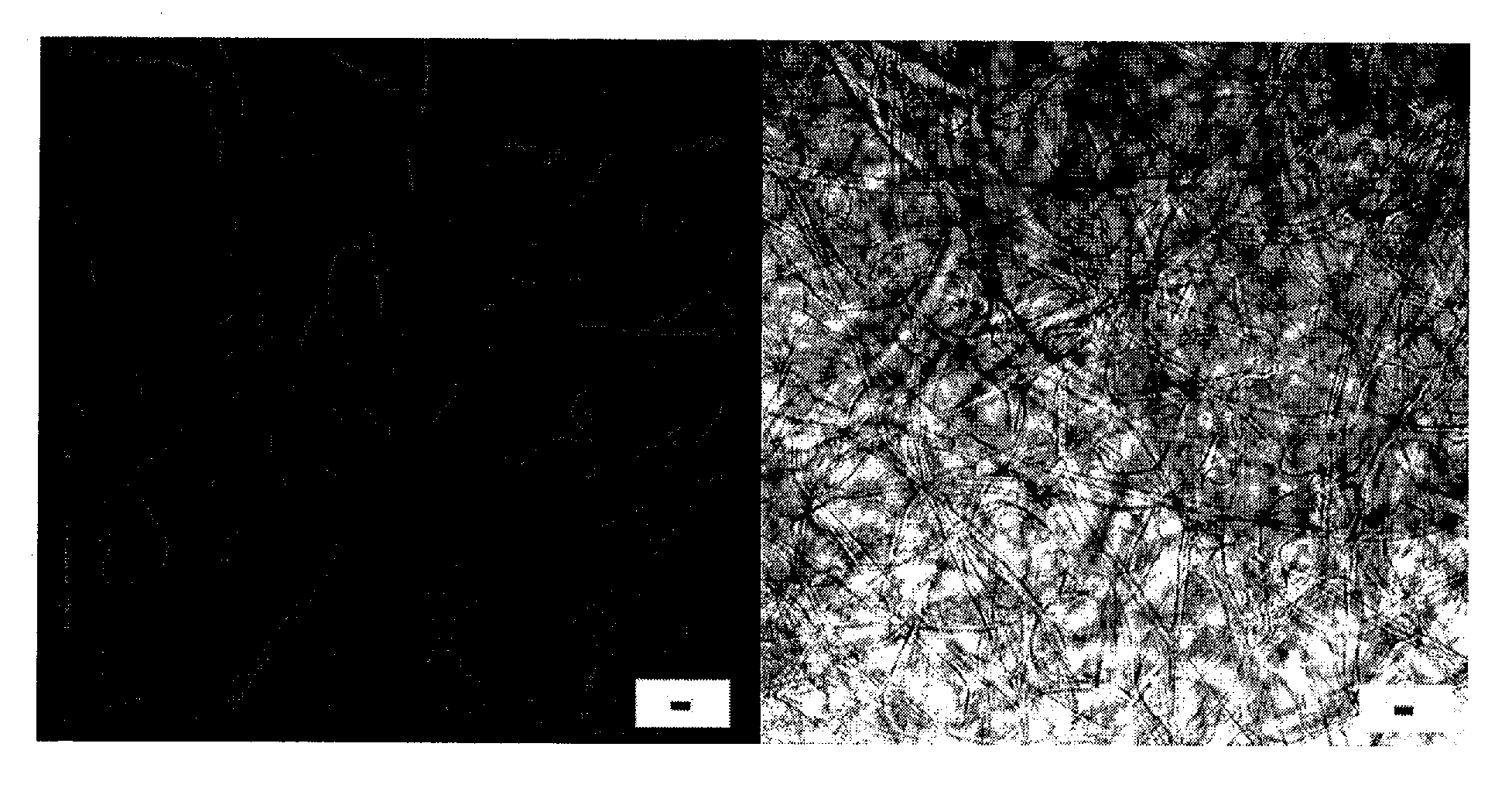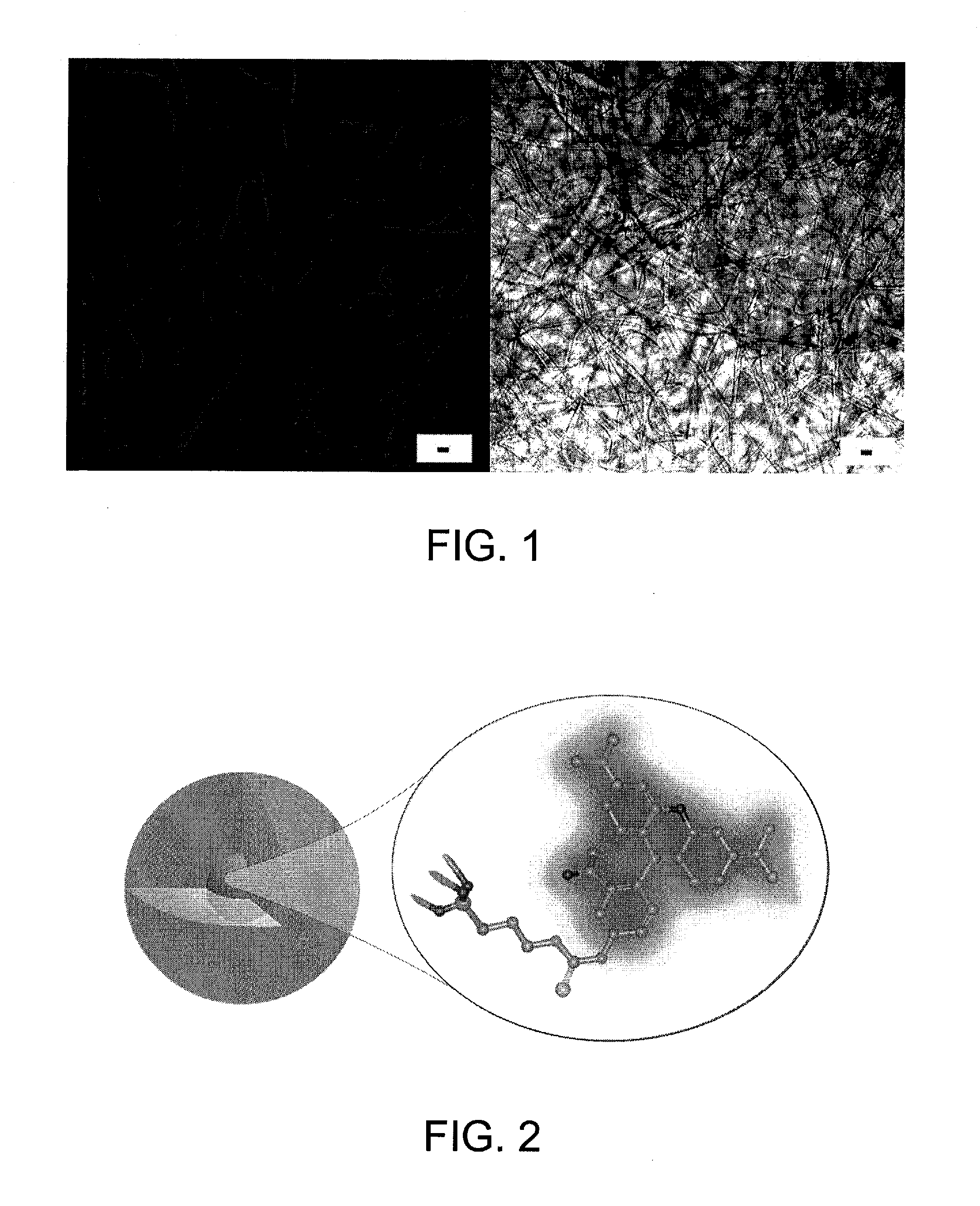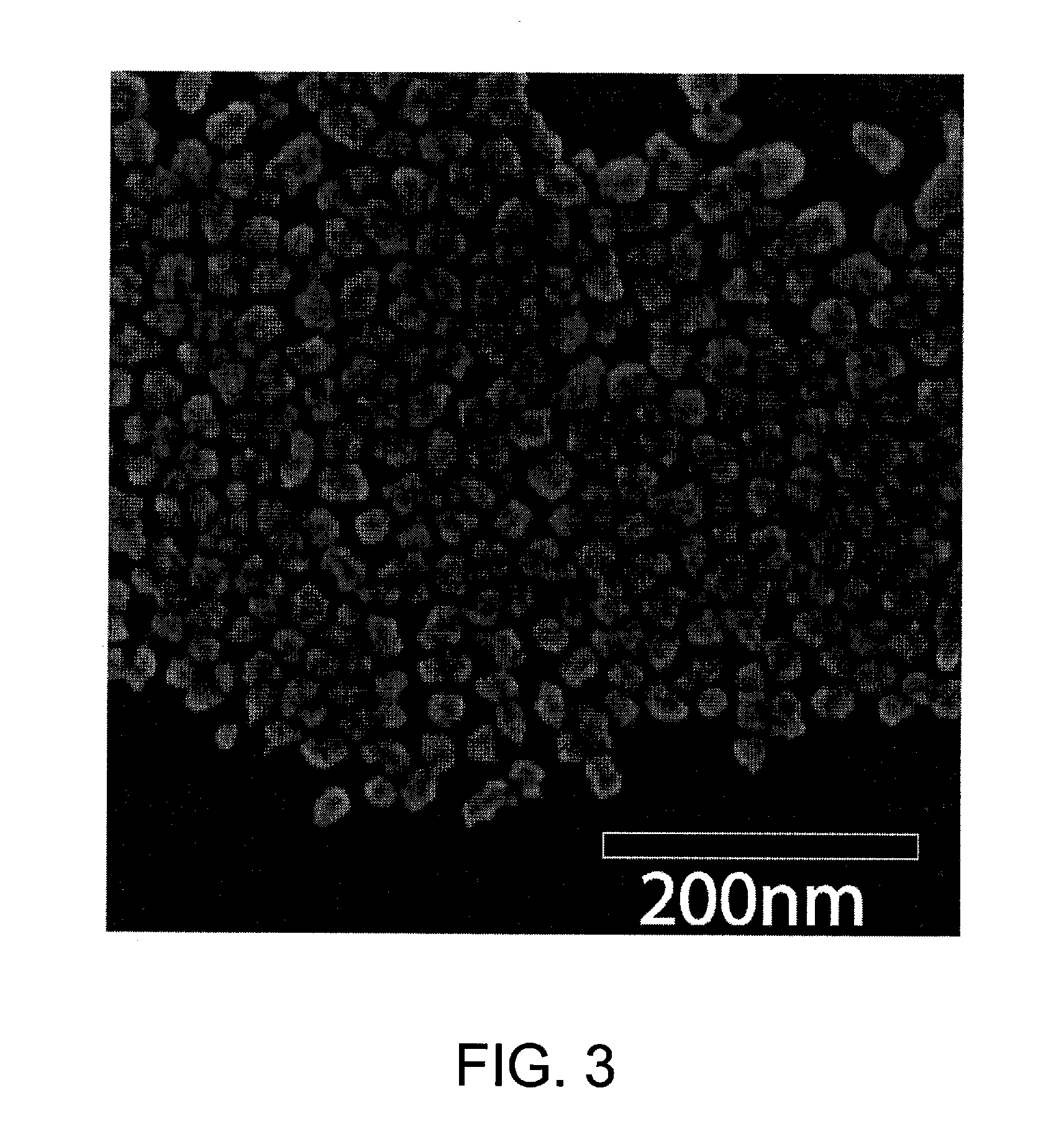Polymeric materials incorporating core-shell silica nanoparticles
a technology of silica nanoparticles and polymer materials, applied in the direction of material analysis, chemical indicator analysis, instruments, etc., can solve the problems of loss of hundreds of millions of dollars each year, loss of millions of dollars in revenue for corporations producing commonly counterfeited items, and negative effects on consumers and producers
- Summary
- Abstract
- Description
- Claims
- Application Information
AI Technical Summary
Benefits of technology
Problems solved by technology
Method used
Image
Examples
example 1
6.1 Example 1
Cellulose Acetate Fibers with Fluorescing Nanoparticles for Anti-Counterfeiting Purposes
[0267]This example demonstrates the incorporation of fluorescent core-shell silica nanoparticles into cellulose acetate (CA) fibers.
[0268]Abstract
[0269]Fluorescent core-shell silica nanoparticles were incorporated into cellulose acetate (CA) fibers. The resulting fibers are white under ambient lighting, and fluoresce at 580 nm when exposed to 488 nm wavelength light. The fluorescing nanoparticles used in this example, Cornell dots (C dots), are comprised of a fluorescent dye-containing silica core surrounded by a silica shell. A solution of CA and C dots was electrospun into a nonwoven fabric, and dry spun into single fibers. The weight percent of nanoparticles incorporated was verified using thermogravimetric analysis (TGA). Increasing C dot loading in the spinning dopes above 10% w / w did not result in an increase in C dot content within the final fibers. Scanning electron microscop...
example 2
6.2 Example 2
Methods of Core-Shell Nanoparticle Synthesis
[0323]Synthesis Methods for 30 Nm TRITC Core-Shell Silica Particles
[0324]100 microliters of tetramethylrhodamine dye dissolved in dimethylsulfoxide were conjugated to a concentration of 4.5 mM, with a 50× molar excess of 3-aminopropyltrimethoxysilane. The reaction was allowed to occur overnight under nitrogen.
[0325]21.2 mL ethanol (200 Proof), 386 uL deionized water, and 2.58 mL 2M ammonia in ethanol were added to a round bottom flask. Magnetic stir bar mixing was started and the 100 uL of dye conjugate was added. After the dye was well dispersed in the solution, 287 uL tetraethylorthosilicate (TEOS) was added. The core formation reaction was allowed to proceed under 8 hours of stirring.
[0326]After the 8 hour core reaction, a shell of pure TEOS was added to the desired thickness. For 30 nm TRITC particles, 25 uL TEOS was added every 15 minutes 23 times.
[0327]Particles were cleaned by dialysis into water or other desired polar ...
example 3
6.3 Example 3
Electrospun Fibers Incorporating pH-Sensitive Nanoparticles
[0338]In today's health-conscious world, physical fitness and wellness is strongly promoted. New and better technology is constantly in demand for monitoring physical performance and health. This example demonstrates the creation of a functional fabric that monitors sweat composition through the incorporation of pH-sensitive core-shell silica nanoparticles into electrospun fabrics.
[0339]Introduction
[0340]Understanding sweat composition is vital for understanding the changes in extracellular fluid and nutritional replacement in the human body (Mark J. Patterson, S. D. R. G., Myra A. Nimmo, Variations in regional sweat composition in normal human males. Experimental Physiology, 2000. 85(6): p. 869-875). The composition of human perspiration is a reflection of exercise, heat exposure, the duration of sweating, and the rate of sweat secretion (T. Verde, R. J. S., Paul Corey, Robert Moore, Sweat composition in exerci...
PUM
| Property | Measurement | Unit |
|---|---|---|
| Percent by mass | aaaaa | aaaaa |
| Percent by mass | aaaaa | aaaaa |
| Percent by mass | aaaaa | aaaaa |
Abstract
Description
Claims
Application Information
 Login to View More
Login to View More - R&D
- Intellectual Property
- Life Sciences
- Materials
- Tech Scout
- Unparalleled Data Quality
- Higher Quality Content
- 60% Fewer Hallucinations
Browse by: Latest US Patents, China's latest patents, Technical Efficacy Thesaurus, Application Domain, Technology Topic, Popular Technical Reports.
© 2025 PatSnap. All rights reserved.Legal|Privacy policy|Modern Slavery Act Transparency Statement|Sitemap|About US| Contact US: help@patsnap.com



